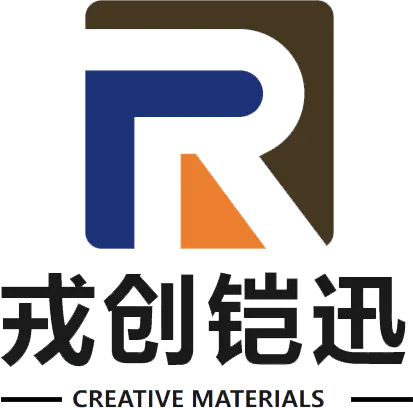As we approach 2025, the semiconductor landscape is witnessing a significant transformation, driven by the increasing adoption of Silicon Carbide (SiC) technologies across various industries. Silicon Carbide meaningfully enhances efficiency and performance in electric vehicles, renewable energy systems, and power electronics, making it a critical component for achieving sustainability goals.
According to a recent market research report by Fortune Business Insights, the global Silicon Carbide market is projected to reach USD 5.57 billion by 2026, growing at a compound annual growth rate (CAGR) of 17.6%. This burgeoning demand highlights the importance of understanding application strategies and market trends for stakeholders.

In this blog, we will present a comprehensive checklist to navigate the future of Silicon Carbide in the coming years, providing insights into positioning within a rapidly evolving market landscape.
As we look towards 2025, the silicon carbide (SiC) market is poised for substantial growth driven by several key factors. Firstly, the rising demand for energy-efficient power electronics is significantly boosting the adoption of SiC devices across various sectors, including automotive, renewable energy, and telecommunications. With an increasing emphasis on reducing carbon footprints and enhancing sustainability, SiC’s superior thermal conductivity and efficiency make it an ideal choice for next-generation applications.

Moreover, advancements in manufacturing technologies are further propelling the silicon carbide market. Innovations in crystal growth and wafer fabrication techniques have significantly reduced production costs while improving the performance of SiC devices. This evolution allows for better integration in high-voltage and high-frequency applications, leading to a broader acceptance in mainstream industries. As major players in the semiconductor space ramp up their investments, the competitive landscape is transforming, creating opportunities for new entrants and driving overall market expansion.
In 2025, the silicon carbide (SiC) market is poised for significant growth, driven by its applications in diverse fields such as electric vehicles, renewable energy, and advanced electronics. However, navigating the global landscape requires an understanding of import and export certifications, especially as geopolitical dynamics evolve. Recent export controls imposed by China on crucial metals underscore the importance of strategic sourcing and compliance for manufacturers relying on silicon carbide.
Tip: When planning to enter the SiC market, ensure that your supply chain adheres to international trade regulations. Understand the certification processes for imports and exports to mitigate risks associated with regulatory changes.
As demand for semiconductor materials escalates, particularly in the context of resilient supply chains, businesses must evaluate their mineral sourcing strategies. With countries implementing stricter export controls, it is imperative for companies to cultivate strong relationships with multiple suppliers to ensure consistency and reliability in their SiC product offerings.
Tip: Regularly assess the geopolitical landscape and stay updated on changes in export regulations. This proactive approach will enable better preparation and adaptability to potential disruptions in the supply chain, ensuring sustained market competitiveness.
| Dimension | 2025 Estimation | Impacts on Industry |
|---|---|---|
| Market Size (USD Billion) | 5.2 | Increased adoption in EVs |
| Growth Rate (%) | 25 | Emerging applications in power electronics |
| Main Application Areas | Power Electronics, Automotive, Renewable Energy | Enhances efficiency and performance |
| Key Import Markets | USA, China, Germany | Driven by manufacturing demands |
| Key Export Markets | Japan, South Korea, Taiwan | Competitive manufacturing and innovative technologies |
| Regulatory Certifications | ISO 9001, RoHS, REACH | Compliance with international standards |
As the market for silicon carbide (SiC) continues to expand, understanding regulatory requirements becomes crucial for companies looking to enter new markets. The global SiC market, projected to reach $3.28 billion by 2025, presents numerous opportunities across various sectors, including automotive, telecommunications, and renewable energy. However, compliance with local regulations can pose significant challenges for new entrants. According to a report by MarketsandMarkets, 45% of companies cite regulatory hurdles as a major barrier to entry, highlighting the need for thorough navigation of these requirements.

To effectively tackle these challenges, businesses must adopt a strategic approach to understanding the regulatory landscape. This includes familiarizing themselves with standards set forth by organizations such as the International Electrotechnical Commission (IEC) and the American National Standards Institute (ANSI). Additionally, companies should engage with local authorities and industry associations to stay updated on evolving regulations that could impact their market entry strategies. A proactive compliance strategy not only helps mitigate risks but also positions companies to leverage their innovative SiC technologies in a competitive landscape.
As we look toward 2025, the landscape of
Silicon Carbide (SiC) applications is transforming,
driven by continuous technological innovations. Industries from automotive to renewable energy are
recognizing the unique properties of SiC, such as its high thermal conductivity,
wide bandgap, and exceptional voltage resistance.
These characteristics allow for enhanced efficiency in power electronics, making SiC a crucial player in
the development of next-generation electric vehicles and advanced energy systems.
The integration of SiC in power semiconductor technology is revolutionizing performance standards.
Innovations in manufacturing techniques are reducing production costs and improving material purity, leading
to higher reliability and efficiency in applications. For instance, advancements in crystal growth and substrate
quality are enabling more widespread adoption in high-frequency and high-temperature environments.
As industries seek to optimize their operational performance and sustainability, SiC emerges not only as
a viable alternative to traditional materials but as a key enabler of cutting-edge technologies.
These developments promise to reshape market dynamics and drive significant advancements
across various sectors in the coming years.
As we look ahead to 2025, the demand for silicon carbide (SiC) is poised for significant growth, driven by the escalating need for energy-efficient technology across various industries. The increasing adoption of electric vehicles (EVs) and renewable energy systems, combined with stringent environmental regulations, suggests a robust market trajectory. Analysts predict that the SiC semiconductor market could grow at a compound annual growth rate (CAGR) of over 20% during the next few years, highlighting the critical role SiC will play in next-generation power electronics.
The opportunities within the silicon carbide sector are vast, particularly in high-performance applications such as power conversion, motor drives, and RF communications. Manufacturers are urged to adjust their strategies to capitalize on the burgeoning market. Investing in R&D for advanced SiC materials and exploring collaborative partnerships can help companies navigate the evolving landscape. Additionally, understanding regional demand variations, particularly in APAC, Europe, and North America, will be essential for stakeholders aiming to optimize their market presence in 2025 and beyond.
This chart illustrates the projected demand growth rates for Silicon Carbide in various application sectors for the year 2025. The data reflects the optimistic trends in market opportunities.
